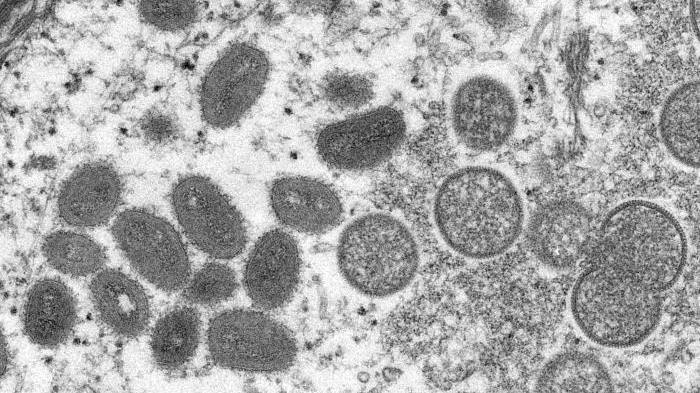-
Mayo Clinic experts provide overview of latest clinical information on monkeypox

ROCHESTER, Minn. — As the monkeypox outbreak continues and the U.S. has declared monkeypox a public health emergency, Mayo Clinic experts have published a special article in Mayo Clinic Proceedings to provide clinicians with a focused overview of the viral infection, establishing strategies for infection prevention and control and a summary of clinical management to consider.
“The purpose of this article is to provide an overview to assist health care professionals in addressing the challenges of monkeypox as well as the system changes that are needed to cope with the concurrent COVID-19 pandemic,” says Aditya Shah, M.B.B.S., a Mayo Clinic infectious disease specialist.
The article, "Monkeypox 2022: Gearing Up for Another Potential Public Health Crisis," provides details on the virology and epidemiology of monkeypox, including guidance to prevent infection and implement control measures.
“This outbreak highlights the importance of identifying social networks and risk factors associated with the current outbreak, while avoiding stigmatization and promoting evidence-based responses, as all communities and individuals are at risk,” says Dr. Shah.
Symptoms of the infection, namely the rash, can tend to last between 2-4 weeks, and symptoms can be severe in children, pregnant women, and patients with immunocompromising conditions. The article calls for public health and other health care organizations to provide specific guidance for these patient populations, including details to prevent infection and implement control measures.
Among other points in the article:
- The exact source of infection as it pertains to the current outbreak, the virus incubation period and the transmissibility as compared to past outbreaks are not well-established.
- Most patients with monkeypox infections have a self-limited course and recover with basic supportive care. Clinicians should be alert to diagnose and manage co-existing sexually transmitted infections and secondary bacterial infections.
- Certain patients may benefit from specific therapies. These patients include children, pregnant or breastfeeding women, immunosuppressed patients, and patients with wide-spread skin/mucosal involvement. These therapies include two antiviral agents, Tecovirimat (TPOXX) and brincidofovir. Currently, supplies of TPOXX are governed and managed by state and national public health agencies.
- Post-exposure treatment strategies with the Jynneos vaccine.
A video of co-author Nischal Ranganath, M.D., Ph.D., discussing the report also is available.
“As we gain further understanding of the transmission dynamics, it is likely that recommendations will change, and public information must keep pace,” says Dr. Ranganath, an infectious disease specialist. “The public health impact of this outbreak is uncertain. While it is unlikely that we will see widespread transmission as with COVID-19, even relatively small outbreaks could further burden a health care system that already is stressed by COVID-19.”
###
About Mayo Clinic Proceedings
Mayo Clinic Proceedings is a monthly peer-reviewed journal that publishes original articles and reviews on clinical and laboratory medicine, clinical research, basic science research, and clinical epidemiology. The journal, sponsored by Mayo Foundation for Medical Education and Research as part of its commitment to physician education, has been published for 95 years and has a circulation of 127,000.
About Mayo Clinic
Mayo Clinic is a nonprofit organization committed to innovation in clinical practice, education and research, and providing compassion, expertise and answers to everyone who needs healing. Visit the Mayo Clinic News Network for additional Mayo Clinic news.
Media contact:
- Jay Furst, Mayo Clinic Communications, newsbureau@mayo.edu
Related Articles







